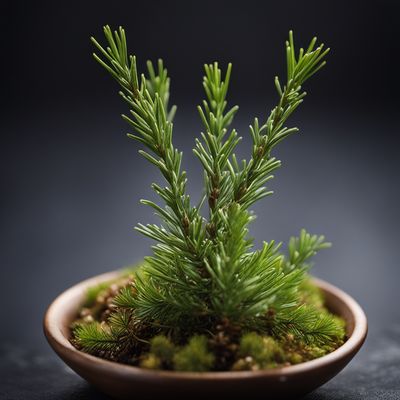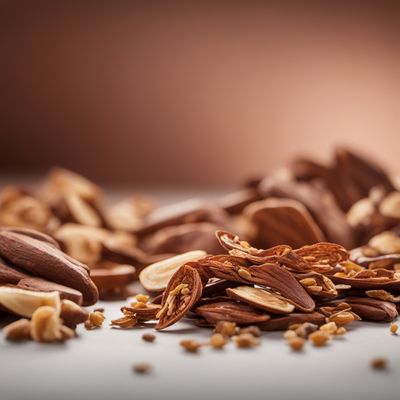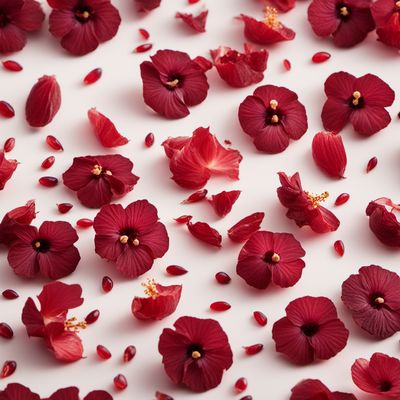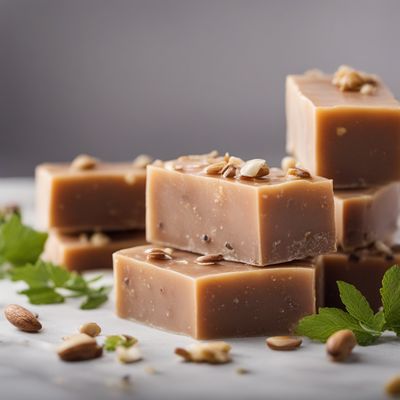
Ingredient
Lignum vitae (infusion bark, wood)
"The Mighty Lignum Vitae: Nature's Healing Power"
Lignum vitae is a dense and heavy wood that ranges in color from dark green to brown. Its texture is smooth and polished, and it possesses a distinct aromatic scent. The wood is incredibly durable and resistant to water, making it ideal for various applications, including culinary use and medicinal purposes. Its infusion bark, when steeped in hot water, releases a rich and earthy flavor, adding depth to dishes and beverages.
Origins and history
Lignum vitae is native to the Caribbean and Central America, where it has been used for centuries by indigenous communities. Its name, which translates to "wood of life" in Latin, reflects its historical significance. The wood was highly valued for its strength and durability, making it a popular choice for shipbuilding, tool handles, and bearings. In traditional medicine, lignum vitae was used to treat various ailments, including arthritis, respiratory issues, and digestive problems.
Nutritional information
Lignum vitae is not typically consumed for its nutritional value, as it is primarily used for its medicinal properties rather than as a food source.
Allergens
There are no known allergens associated with lignum vitae.
How to select
When purchasing lignum vitae infusion bark or wood, look for pieces that are well-dried and free from mold or signs of decay. The wood should be dense and heavy, indicating its quality and durability.
Storage recommendations
To maintain the freshness and quality of lignum vitae infusion bark or wood, store it in a cool, dry place away from direct sunlight. Properly sealed containers or airtight bags can help preserve its aroma and prevent moisture absorption.
How to produce
Lignum vitae trees are slow-growing and require a tropical climate to thrive. While it is challenging for amateurs to grow lignum vitae, it can be propagated through seeds or cuttings under controlled conditions.
Preparation tips
To use lignum vitae infusion bark, steep a small piece in hot water for several minutes to release its flavors. The resulting infusion can be used as a base for herbal teas, soups, or stews, adding a unique earthy taste. When using lignum vitae wood in culinary applications, it is primarily used for smoking or grilling, imparting a distinct smoky flavor to meats, fish, or vegetables.
Culinary uses
Lignum vitae infusion bark is commonly used in traditional Caribbean and Central American cuisines to add depth and complexity to dishes such as soups, stews, and herbal teas. Lignum vitae wood is highly valued for its ability to infuse a smoky flavor into grilled or smoked meats, fish, and vegetables.
Availability
Lignum vitae is primarily found in the Caribbean and Central America, where it is cultivated and harvested for various purposes. It may be available in specialty stores or online retailers that cater to culinary or medicinal ingredients.
More ingredients from this category » Browse all

Cupuaçu
The Exotic Delight: Cupuaçu - A Tropical Treasure for Culinary Adventures

Witch hazel (infusion bark)
Nature's Astringent

Dwarf mountain pine (infusion shoots)
The Aromatic Essence of Dwarf Mountain Pine

Lapacho (infusion bark)
The Healing Elixir from the Forest

Purging cassia (infusion fruits)
The Detoxifying Spice: Purging Cassia

China (infusion bark)
Ancient Bark Elixir

Other herbal infusion materials from any other parts of the plant
Botanical Brews: Exploring the World of Herbal Infusions

Hibiscus (infusion seeds)
The Vibrant Infusion

Fleawort (infusion seeds)
"Nature's Digestive Aid: Unveiling the Power of Fleawort Infusion Seeds"

Cocoa (infusion husks)
The Essence of Cocoa Infusion Husks

Soap-bark tree (infusion bark)
The Natural Cleanser: Soap-Bark Tree

Sweet corn (stigmas styles)
The Golden Threads: Sweet Corn Stigmas Styles